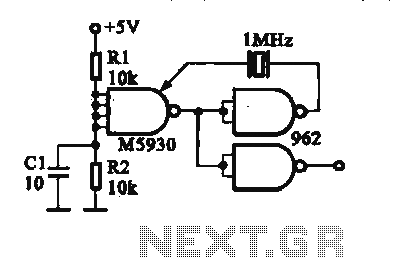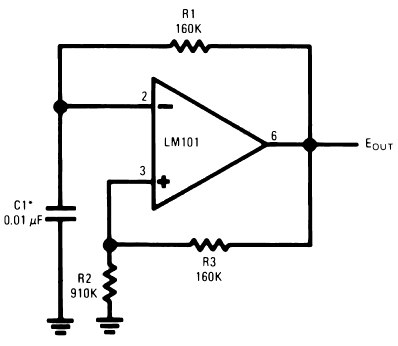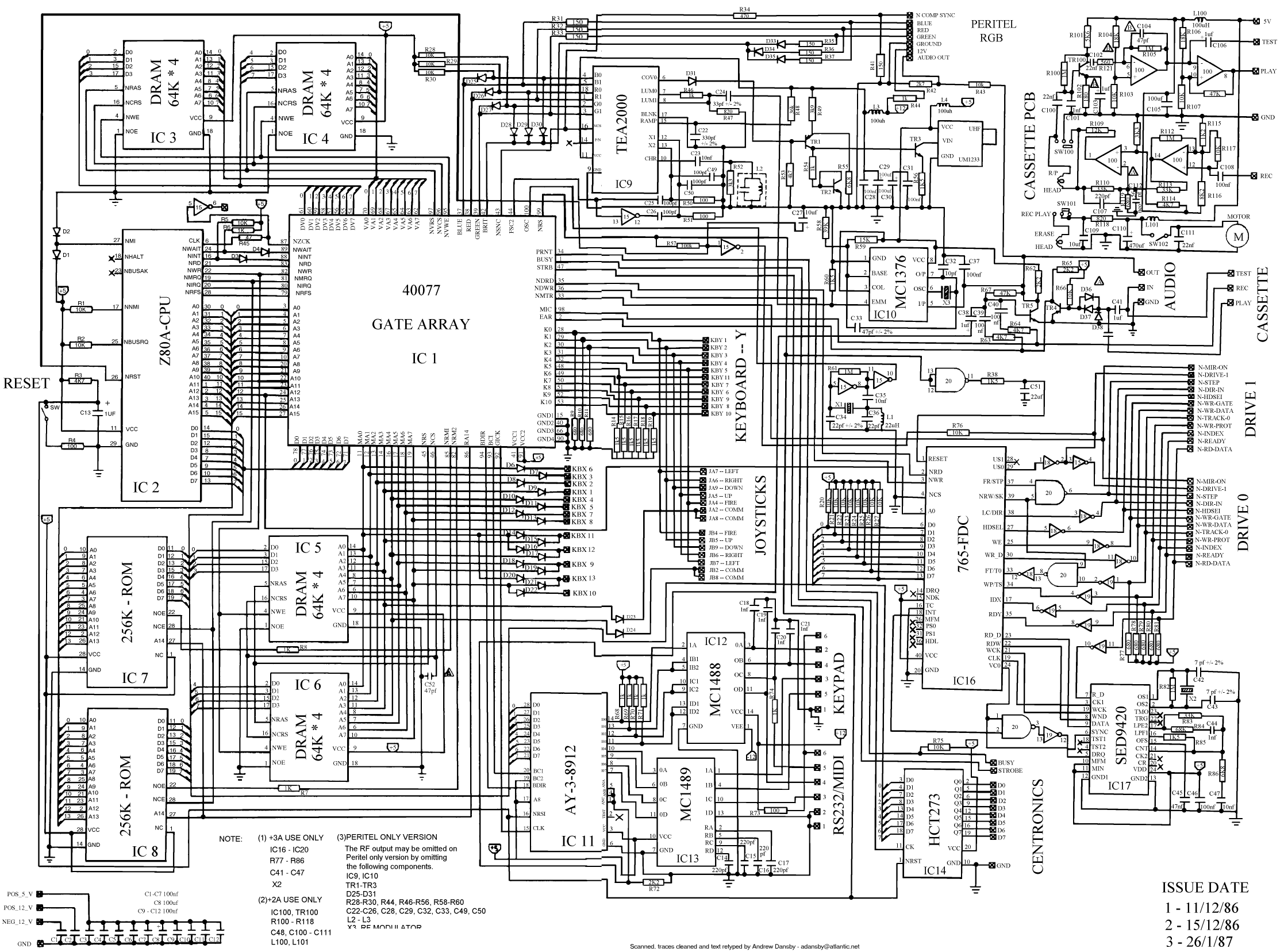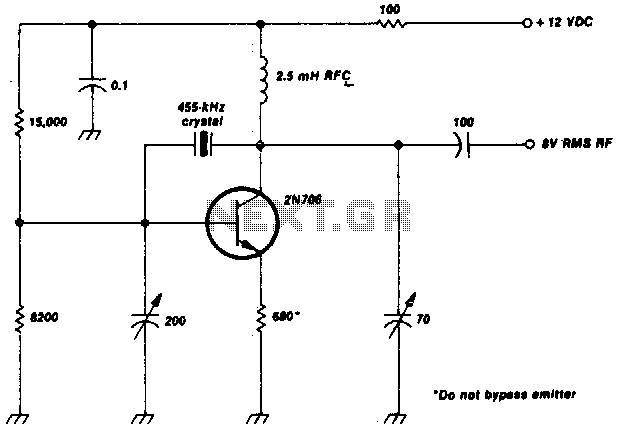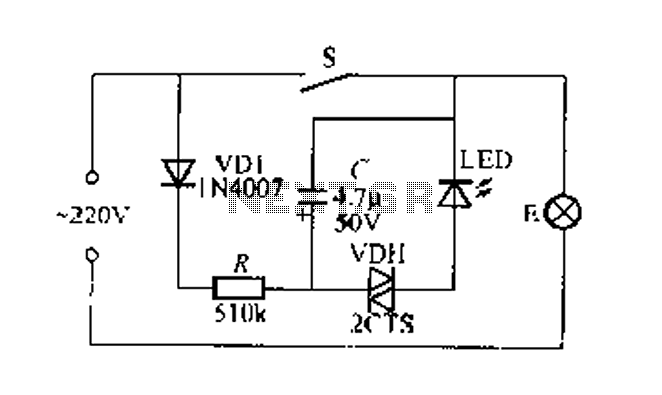
Low-Frequency Crystal Oscillator Circuit
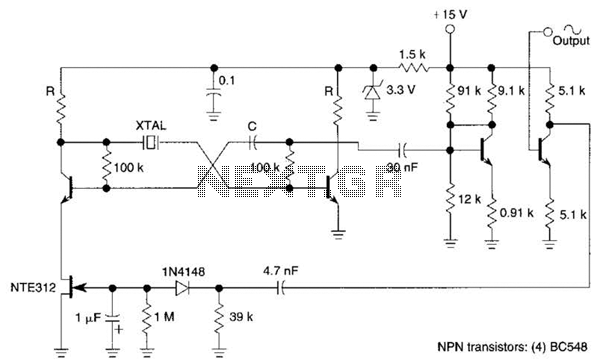
Q1, Q2, and the associated circuitry constitute a modified astable multivibrator where the loop gain is automatically adjusted to the threshold of oscillation by field effect transistor Q3. Q4 amplifies the signal at the collector of Q2 and isolates the oscillator section from the output. This stage operates over a wide bandwidth and provides a clean 2.5-V amplitude sine wave into a resistive load of 20 kΩ or greater. The stage containing Q5 has a voltage gain of 1 and is designed to isolate the nonlinear effects of rectifier D1 from the output.
The described circuit employs a modified astable multivibrator configuration using transistors Q1 and Q2 to generate oscillations. The automatic adjustment of the loop gain to the oscillation threshold is facilitated by field effect transistor Q3, which plays a critical role in maintaining stable oscillation conditions. This automatic gain control ensures that the circuit remains operational across varying load conditions and environmental factors.
Transistor Q4 serves as a linear amplifier, taking the output signal from the collector of Q2. Its primary function is to amplify the oscillatory signal while also providing isolation between the oscillator and the subsequent output stage. This isolation is essential to prevent feedback that could destabilize the oscillator. The output from Q4 is characterized by a clean sine wave with an amplitude of 2.5 V, making it suitable for driving resistive loads of 20 kΩ or higher. The wideband operation of this stage indicates that the circuit can effectively handle a range of frequencies without significant distortion, which is crucial for applications requiring high fidelity in signal reproduction.
The inclusion of transistor Q5, which operates with a voltage gain of 1, ensures that the output is not influenced by the nonlinear characteristics of rectifier D1. This isolation is important as it preserves the integrity of the output signal, allowing for accurate signal processing downstream without introducing unwanted distortions from the rectification process. Overall, the circuit is designed to provide reliable oscillation, effective amplification, and signal integrity, making it suitable for various electronic applications. Ql, Q2, and the associated circuitry form a modified astable multivibrator in which the loop gain is automatically adjusted to the threshold of oscillation by means of field effect transistor Q3. Q4 linearly amplifies the signal present at the collector of Q2 and isolates the oscillator section of the circuit from the output.
This stage features wideband operation and delivers a clean 2.5-V amplitude sine wave into a resistive load greater than or equal to 20 kQ. The stage comprising Q5 has a voltage gain of 1 and its sole purpose is to isolate the nonlinear effects of rectifier D1 from the output. 🔗 External reference
The described circuit employs a modified astable multivibrator configuration using transistors Q1 and Q2 to generate oscillations. The automatic adjustment of the loop gain to the oscillation threshold is facilitated by field effect transistor Q3, which plays a critical role in maintaining stable oscillation conditions. This automatic gain control ensures that the circuit remains operational across varying load conditions and environmental factors.
Transistor Q4 serves as a linear amplifier, taking the output signal from the collector of Q2. Its primary function is to amplify the oscillatory signal while also providing isolation between the oscillator and the subsequent output stage. This isolation is essential to prevent feedback that could destabilize the oscillator. The output from Q4 is characterized by a clean sine wave with an amplitude of 2.5 V, making it suitable for driving resistive loads of 20 kΩ or higher. The wideband operation of this stage indicates that the circuit can effectively handle a range of frequencies without significant distortion, which is crucial for applications requiring high fidelity in signal reproduction.
The inclusion of transistor Q5, which operates with a voltage gain of 1, ensures that the output is not influenced by the nonlinear characteristics of rectifier D1. This isolation is important as it preserves the integrity of the output signal, allowing for accurate signal processing downstream without introducing unwanted distortions from the rectification process. Overall, the circuit is designed to provide reliable oscillation, effective amplification, and signal integrity, making it suitable for various electronic applications. Ql, Q2, and the associated circuitry form a modified astable multivibrator in which the loop gain is automatically adjusted to the threshold of oscillation by means of field effect transistor Q3. Q4 linearly amplifies the signal present at the collector of Q2 and isolates the oscillator section of the circuit from the output.
This stage features wideband operation and delivers a clean 2.5-V amplitude sine wave into a resistive load greater than or equal to 20 kQ. The stage comprising Q5 has a voltage gain of 1 and its sole purpose is to isolate the nonlinear effects of rectifier D1 from the output. 🔗 External reference
Warning: include(partials/cookie-banner.php): Failed to open stream: Permission denied in /var/www/html/nextgr/view-circuit.php on line 713
Warning: include(): Failed opening 'partials/cookie-banner.php' for inclusion (include_path='.:/usr/share/php') in /var/www/html/nextgr/view-circuit.php on line 713
